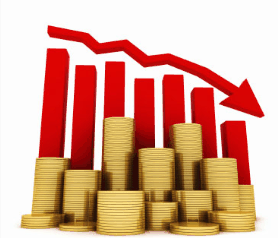
2011 was a bad year for Australia’s state governments. The value of housing transactions slumped, hitting their lowest levels in six years in nominal terms, and their lowest level in eleven years in real, inflation-adjusted terms (see below charts).
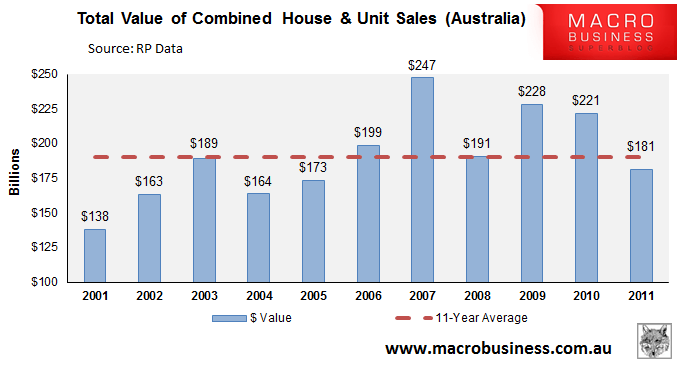
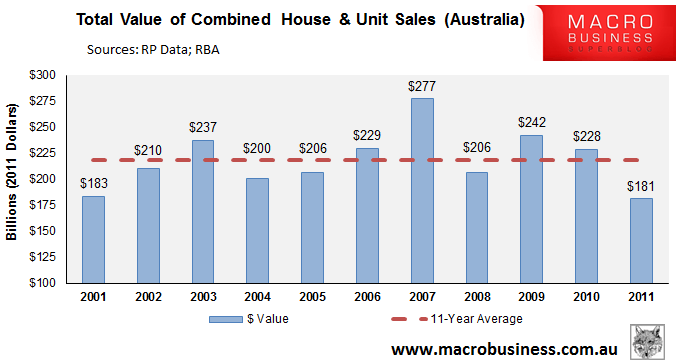
The slump in housing transactions hit state government budgets hard, with the amount of revenue raised from stamp duties falling by -13% in 2010-11 and budgeted to fall by around -20% in 2011-12 relative to when stamp duty receipts peaked in 2007-08 (see below chart).
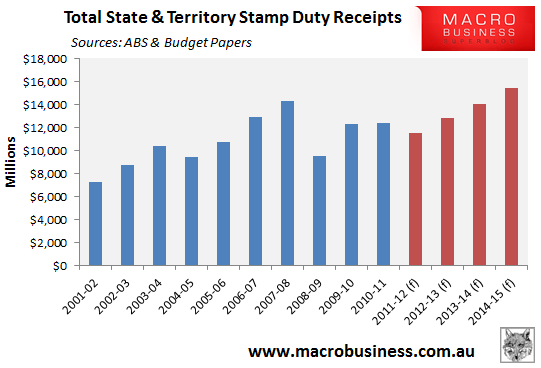
The states had budgeted for a recovery in stamp duty receipts in 2012-13 through to 2014-15. However, recent transfer data for Australia’s four biggest states – New South Wales, Victoria, Queensland and Western Australia – shows that transaction volumes remain weak, tracking well below what would be condidered ‘normal levels’ (see below charts). This suggests that the slump in stamp duty receipts will continue.
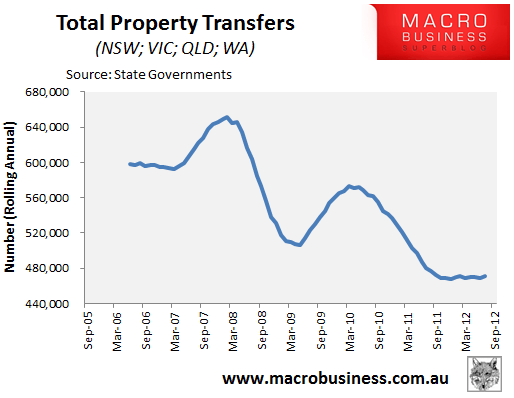
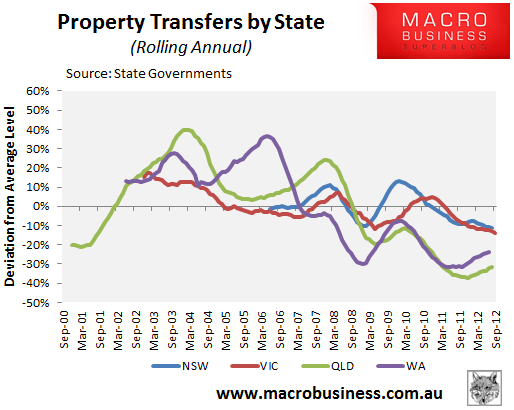
Stamp duty is one of the states’ main sources of tax revenue. As long as the housing market remains weak, state finances will remain under pressure, threatening their credit ratings and facilitating further cut backs to government spending and jobs.
PS: If anyone knows where I can obtain property transfer data for South Australia, Tasmania, the ACT, and NT, can you let me know?
Twitter: Leith van Onselen. He is the Chief Economist of Macro Investor, Australia’s independent investment newsletter covering trades, stocks, property and yield. Click for a free 21 day trial.

